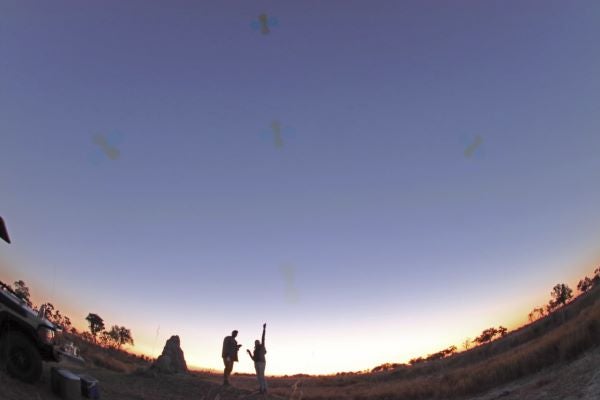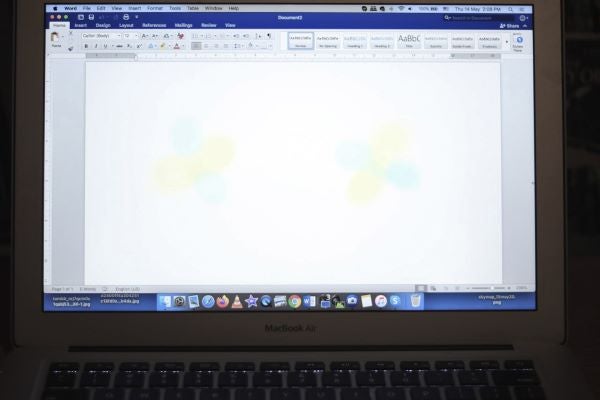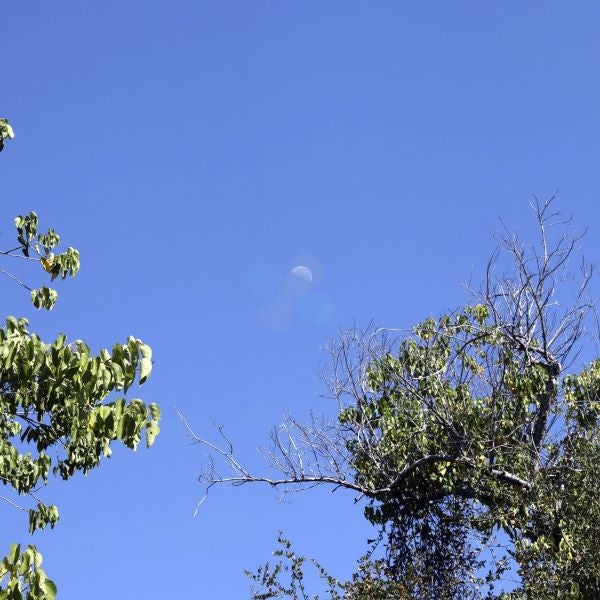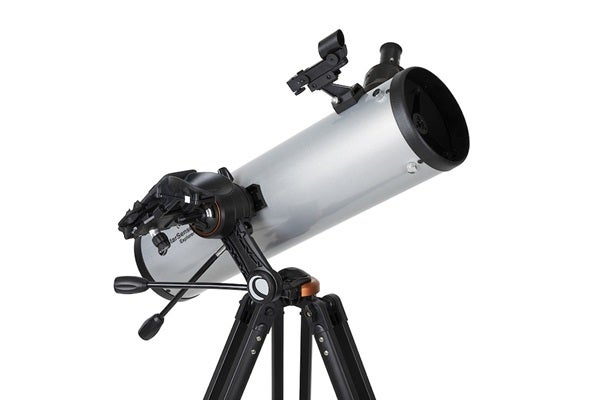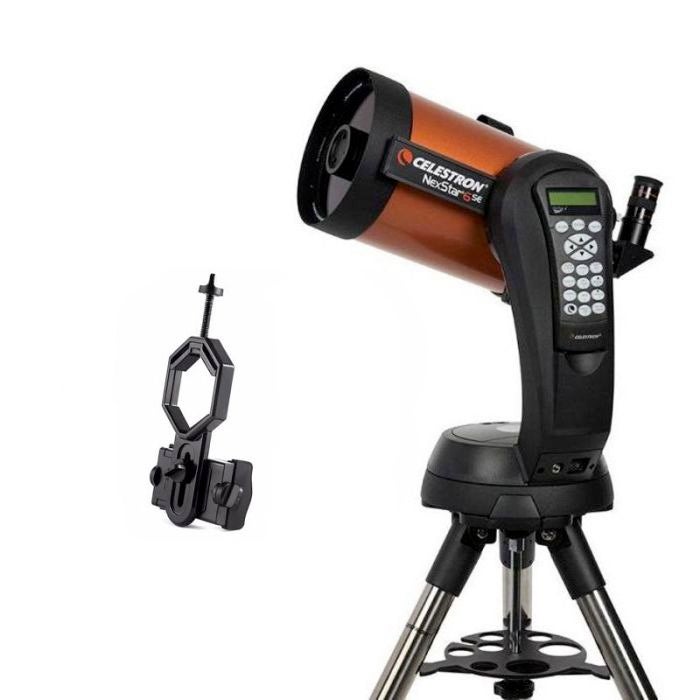While we can see it, we can’t image it, because the Brush originates in the eye and involves the way we see polarized light. Austrian mineralogist Wilhelm Karl von Haidinger discovered the Brush in 1844. Although it isn’t astronomical, seeking it out can help amateur astronomers train their eyes to make difficult observations at the limits of human vision.
Shared observations tell us that the shape, size, and color of Haidinger’s Brush varies with the observer. So the descriptions of it here are personal experiences.
Indoors
A laptop’s LCD screen is polarized, so you can use it to practice seeing the Brush. Fill the screen with a blank Word document. With the laptop at arm’s length, tilt your head from side to side as you look at the monitor.
Most people to whom I’ve shown the phenomenon see the yellow axis first. I usually describe the tilt of the axes by referring to an analog clock face. When I tilt my head from left to right, I see the right arm of the yellow axis shift from the 2:30 position to the 1:00 position, and the left arm of the blue axis shift from 11:30 to 10:00.
Outdoors
On a clear day, go outside just after sunset or before sunrise and look overhead, where the polarized sky is strongest. Now relax your gaze and sweep the sky gradually from left to right. At about 3˚, the Brush is small — less than the width of two fingers held at arm’s length. The measurement is consistent with the size of the visual field of the eye’s macula lutea (the retina’s yellow spot), which is where the Brush originates.
Now slowly turn in a circle while looking overheard. The Brush’s axes should turn in the same direction you are spinning. The longer you look, the dimmer the Brush gets, so don’t linger. The Brush’s intensity may also fade with increasing elevation of the Sun.
Note, however, that while I find the Brush easiest to see just after sunset, my wife Deborah Carter finds it more often during daylight hours. The Brush’s yellow axis appears more prominent when seen against a bright background like on a hazy day, while the blue axis is more prominent against a dark background such as during civil twilight.
During your sweeps, you’ll see that the yellow axis always points toward the Sun. One simple way to check is to look at the Brush next to the First or Last Quarter Moon. The Brush’s yellow axis will run perpendicular to the Moon’s terminator and align with the imaginary line between the Sun and the Moon.
Being able to align the yellow axis with the Sun has it usefulness, especially in the dawn before sunrise. Indeed, Haidinger’s Brush can be employed to locate the point along the horizon where the Sun will rise, thereby increasing your chances of seeing a green flash — atmospheric conditions permitting, of course.
Mind game
Haidinger’s Brush looks larger near the horizon than overhead. It’s the illusion that makes the Moon appear larger there. And the closer you look to the horizon, the fainter the blue axis becomes, until it fades from view.
If you have trouble seeing the Brush, don’t give up. Experience has shown that once seen, it becomes part of your normal visual landscape — and a wonder you can perpetually enjoy.

